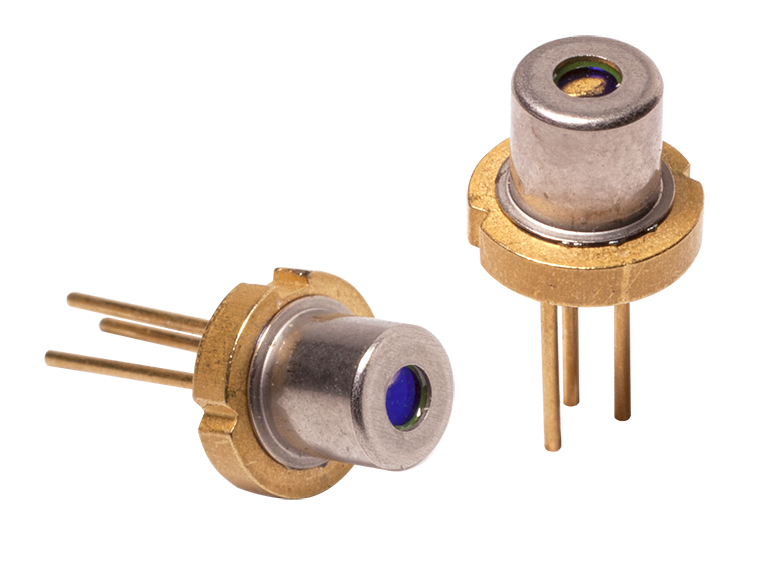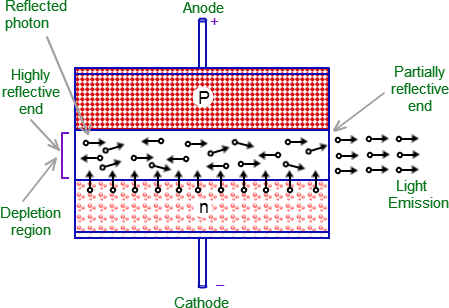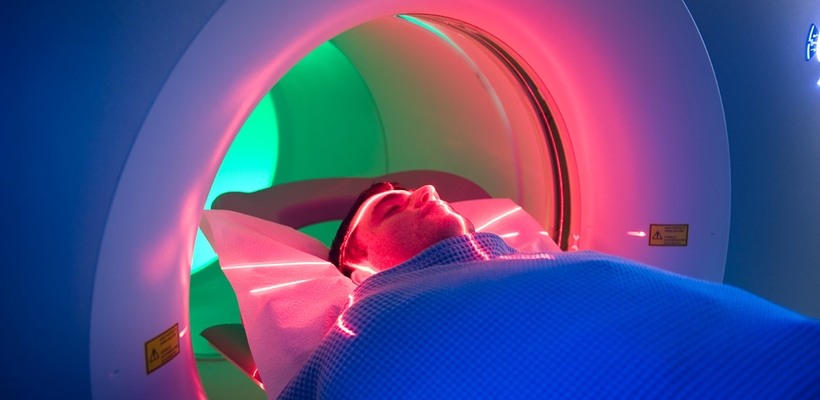
Diode laser is a small, extremely efficient semiconductor source of coherent light. Courtesy of Lumentum.
Introduction to the Diode Laser
Researchers have been developing different types of coherent light sources to fit a larger span of applications since 1960. Present-day lasers vary in size, power-range, and wavelength capabilities. Many different fields now benefit from the customizability of the modern laser industry. Today we will cover the most versatile and compact device to date, the diode laser. Diode laser is a type of semiconductor laser in which coherent light is created at the diode’s junction. The small size and highly-efficient pumping render them especially useful in applications such as optical data transmission and data storage, spectroscopy, medicine, and pumping solid-state lasers.

Above is a diagram of an acting laser diode. Courtesy of TutorCIrcle.
How They Work
Diode laser is, of course, based on a laser diode. Laser diodes are created using direct bandgap semiconductors. An active layer between an p- and n-type layers is formed on an n-type substrate. Electrodes then apply a voltage across the p-n junction to create the necessary population inversion within the diode. When a forward voltage is applied, electrons will combine with holes at the p-n junction and emit the light. Polished ends of the active layer act as a resonance cavity within the laser diode. Light is therefore amplified by the process of stimulated emission, and the diode outputs a coherent beam. This process is very similar as with the the light-emitting diode (LED). LEDs, however, are not coherent.
Structures with different bandgap energies allow for different wavelength emissions. While the most common semiconductor lasers operate in the near-infrared or mid-infrared spectral region, some others generate red light or blue or violet light.
Advantages of Diode Lasers
Diode laser has a fairly simplistic construction when compared to other laser types. Its small size also allows for easier use and access. The process within the p-n junction is also highly efficient, and consequently diodes require low power consumption. In addition, different diodes access a wide range of wavelengths. These factors along with a relatively low cost make diodes lasers the most economical choice for many different applications.

Diode lasers are extremely common in medicine and biology due to their flexibility and beam delivery. Courtesy of Akela.
Applications of Diode Lasers
As stated above, diode lasers are perhaps the most versatile source of light. While these devices could be customized for almost all optical applications, here we will cover a few of the most common and well-established applications.
1. Diode Lasers for Optical Data Transmission
As discussed in a previous article, optical communication is a fundamental technology in the modern world. This method of data transmission allows for wide bandwidths of information to be sent close to the speed of light. Fiber optic systems can send an encoded signal over long distances with minimal loss when driven with the correct light source. Laser diodes operating in the near-infrared are ideal signal beams because of their coherent output. This way, the diode signal enables greater coupling efficiency in the cable and experiences less modal dispersion. They are highly efficient in single-mode fibers for large transmission distances.
2. Spectroscopy
Spectroscopy was originally limited in examining the interaction of visible light with gases. Due to Doppler broadening, atoms in motion exhibit broadened absorption and emission spectra. Researchers then discovered, however, that they were able to select atoms with zero velocity along one direction with a tunable laser light source. Spectroscopy driven by diode lasers achieves very low detection limits. Diode lasers are now extremely common in spectroscopy because of their narrow bandwidth, easy operation, and high power capabilities.
3. Diode Laser in Medicine
Diode laser benefits a wide variety of medical applications because of their brightness, reliability, and compact size. They are especially prominent in photodynamic therapy (PDT) and non-invasive surgical procedures. PDT treats non-melanoma skin cancer and precancerous conditions by exposing a photosensitizing agent under the skin to visible light. Diode lasers allow for flexibility of spot size, therefore providing target control on the skin.
4. Pumping Solid-State Lasers
Diode-pumped solid-state lasers (DPSS) are solid-state lasers created by pumping a solid gain medium with a laser diode. This process of “pumping” is how energy transfers into a medium to excite atoms and create a population inversion so that stimulated emission can occur. The gain medium in these lasers is typically a crystal, glass, or fiber. These lasers are able to generate power that ranges from a few milliwatts to multiple kilowatts.
Conclusions
As we saw in this article, diode-pumped solid state lasers are omnipresent in various areas of modern technology. With numerous advantages over their predecessors using lamp-pumped technology they became the preferred source of coherent light over the last few decades. Dear readers, do you use DPSS lasers in your line of work? Do you know of an application that we haven’t discussed here? We would like to know and learn – so, please use the comment section to discuss. Also, if you ever need to buy a new DPSS lasers, please don’t forget our dedicated FindLight page for DPSS lasers where you can find and compare products from various vendors.
If you liked this article, you might also like our Advanced Guide on Tunable Diode Lasers for Optical Engineers.
